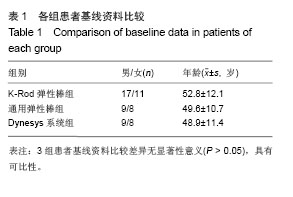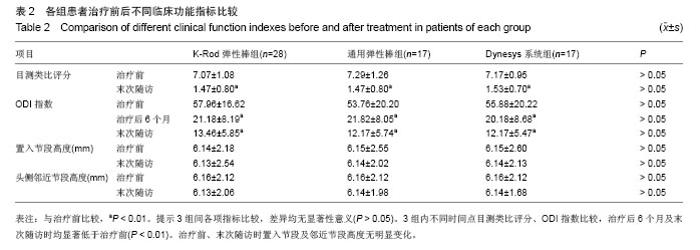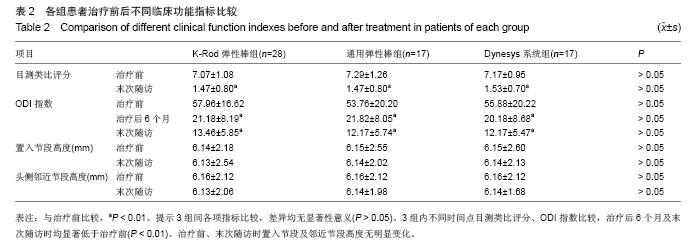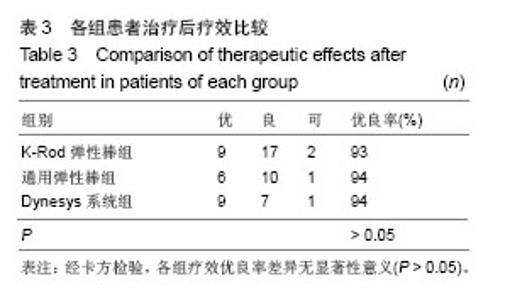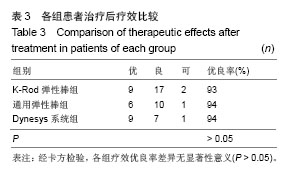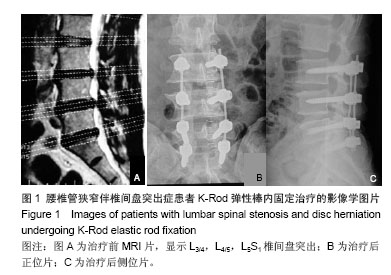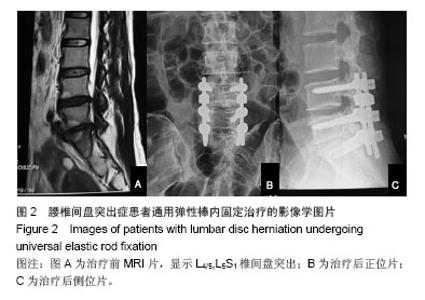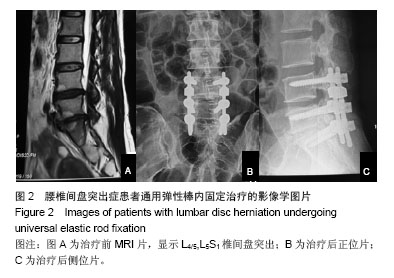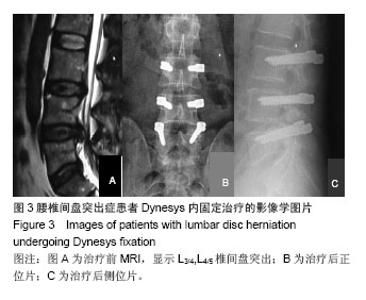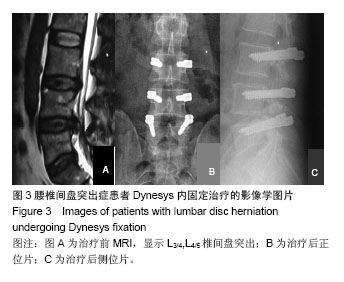| [1]王雪松,张烽,陈向东,等.腰椎新型动态固定系统腰椎后路固定融合的生物力学性能[J]. 中国组织工程研究与临床康复,2008, 12(52):10215-10218.
[2]双峰,侯树勋.腰椎融合术后邻近节段退变的临床研究现状[J]. 中国修复重建外科杂志, 2013,27(1)110-115.
[3]陈文钧,许耀,许桦,等.腰椎后路固定融合术后邻近节段退变的中期随访研究[J].脊柱外科杂志,2011,9(6):346-349.
[4]Kumar A,Beastall J,Hughes J,et al.Disc changes in the bridged and adjacent segment after Dynesys dynamic stabilization system after two years.Spine (Phila Pa 1976). 2008;33(26):2909-2914.
[5]De Iure F,Carson WL,Hardacker JW,et al.The effect of arthrodesis,implant stiffness,and time on the canine lumbar spine. JSpine Disord Tech.2007;20:549-559.
[6]邸宁,王浩明,李翰卿,等. K-Rod动态固定治疗腰椎间盘突出症39例报告[J].中国骨与关节杂志,2013,2(6):322-327.
[7]武昌府,赵卫东,孙培栋,等.基于椎弓根螺钉的新型聚醚醚酮树脂动态稳定内固定系统的生物力学评价[J].中华创伤骨科杂志, 2013,15(9)800-803.
[8]张阳,李放.Dynesys动态固定系统与腰椎相邻节段退变的研究进展[J].中国骨与关节杂志,2013:2(6):358-360.
[9]杨震,周焯家,李波,等. Dynesys弹性内固定治疗退行性腰椎疾病12例临床分析[J].贵州医药,2011,35(10):899-901.
[10]Jensen MP, Karoly P, Braver S. The measurement of clinical painintensity: a comparison of six methods. Pain. 1986;27(1):117-126.
[11]Fairbank JC, Pynsent PB. The Oswestry Disability Index. Spine (Pbila Pa l 976). 2000;25(22):2940-2952.
[12]杨惠林,唐天驷.腰椎不稳与腰椎管狭窄专题研讨会纪要[J].中华骨科杂志,1994,14(1):60-63.
[13]Ghiseli C,Wang JC,Bhatia NN,et al.Adjacent segment degeneration in the lumbar spine.J Bone Joint Surg Am. 2004;86(7):1497-1503.
[14]朱小广,丁亮华,姜世涛,等.腰椎后路经椎弓根动态固定系统研究新进展[J].中国脊柱脊髓杂志,2011,2(21):252-254.
[15]刘先哲,许伟华,叶树楠,等. Dynesys动态稳定系统治疗下腰椎疾病效果观察[J].中华骨科杂志,2013,33(1):20-25.
[16]严越茂,李世平.单阶段椎间融合联合邻近节段ISOBAR动态固定治疗腰椎退变性疾病[J].中国骨科临床与基础研究杂志,2014, 6(2):89-94.
[17]Stoll TM,Dubois G,Schwarzenbach O.The dynamic neutralization system for the spine:a multi-center study of a novel non-fusion system.Eur Spine J. 2002;11 Suppl 2:S 170-178. |

